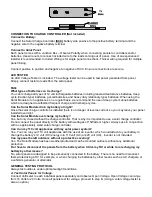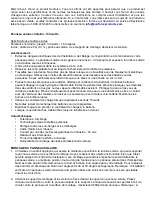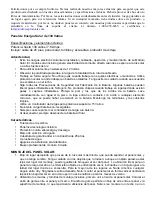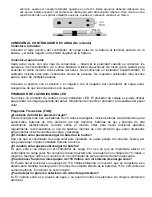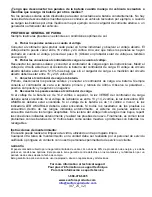
CONNECTION TO CHARGE CONTROLLER (Not Included)
Connect to Battery:
Connect the Solar Charge Controller
(SCC)
battery side positive to the positive battery terminal and the
negative wire to the negative battery terminal
Connect to Solar Panel:
Each panel comes with a Junction Box – Observe Polarity when connecting panels to controllers and/or
batteries. Use wire nuts to connect included wire to the leads coming out of panel. Use of an experienced
installer is recommended. Included Wiring is for single panel connections. Thicker wiring required for multiple
panel linking.
Connect positive to positive and negative to negative of SCC. Ensure connections are secure.
LED TESTER
An LED Voltage Tester is included. The voltage tester can be used to test power generated from panel.
Simply connect tester to leads from the solar panel.
FAQ:
What types of batteries can I recharge?
You can recharge all types of 12 volt rechargeable batteries including lead-acid automotive batteries, deep
cycle (traction type) batteries, gel-cell batteries, and heavy duty (stationary type) batteries. When using the
Solar Module to run appliances on a regular basis, we recommend the use of deep cycle marine batteries
which are designed to withstand frequent charge and discharge cycles.
Can the Solar Module drain my battery at night?
Once the solar charge controller is installed there is no danger of reverse current, so you may leave your panel
installed overnight.
Can the Solar Module overcharge my battery?
Yes, but only if used without the charge controller. That is why it is important to use a solar charge controller.
Do not connect the panel directly to the battery with wattages of 15Watts or higher. Always use in conjunction
with an appropriately sized solar charge controller.
Can I run my 110 volt appliances with my solar power system?
Yes. You can run your 110 volt appliances with the use of an inverter, which would attach to your battery to
change the battery’s 12 volt (DC) energy into 110 volt (AC) or 220 volt (AC). Inverter is not included.
Can my panel be left outdoors without a protective covering?
Yes. The Solar Module has been weatherproofed and can be mounted outdoors without any additional
protection.
Do I have to disconnect the panels from the battery when I drive my RV or while I am recharging my
battery by other means?
No, solar panels are designed to be permanently connected to the battery. There is no need to disconnect
them while driving a RV for example, or when charging the batteries by other means such as AC chargers, or
a vehicle’s generator or alternator.
GENERAL TESTING PROTOCOL
Always test outdoors under optimal sunlight conditions.
A. Test Solar Panels for Voltage.
Connect Voltmeter to each individual panel separately and observe Open Voltage. Open Voltage can range
from 16 Volts to 24 Volts. Once all panels test for voltage, proceed to step B. (Using a solar voltage tester is
also an option)



